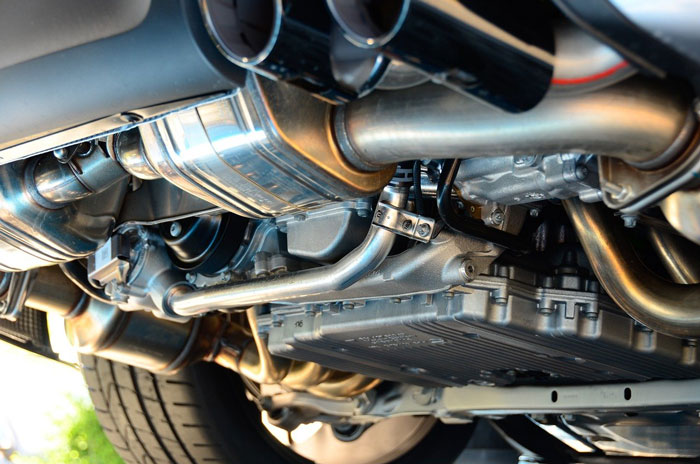Considering whether to remove a catalytic converter from a vehicle is a contentious topic with strong arguments on both sides. As an automotive enthusiast, I’ve delved into the debate surrounding this component that plays a crucial role in reducing harmful emissions. On one hand, some argue that removing the catalytic converter can boost engine performance and sound, especially in modified vehicles. However, environmental advocates and regulatory bodies emphasize the importance of these devices in curbing pollution and meeting emission standards.
In this article, I’ll explore the various arguments for and against removing catalytic converters, shedding light on the implications for both vehicle performance and the environment. By weighing the pros and cons of this controversial practice, we can gain a better understanding of its impact on our cars and the world around us. Let’s delve deeper into this polarizing issue and uncover the complexities behind the decision to remove or retain catalytic converters.
Overview of Catalytic Converter
Discussing the catalytic converter, I delve into the central component of exhaust systems in vehicles, responsible for converting harmful pollutants into less harmful emissions. This device plays a crucial role in reducing air pollution by catalyzing chemical reactions that convert pollutants like carbon monoxide and nitrogen oxides into less harmful substances.
Highlighting the significance of catalytic converters, I emphasize their vital role in meeting emission standards set by environmental agencies. These standards aim to limit the amount of harmful pollutants released into the atmosphere, contributing to overall environmental conservation efforts.
Examining the arguments surrounding catalytic converter removal, I weigh the benefits against the drawbacks to provide a comprehensive understanding of the implications of such actions. It’s essential to consider both sides of the debate to make informed decisions regarding vehicle performance and environmental impact.

Arguments for Removing a Catalytic Converter
When considering the removal of a catalytic converter from a vehicle, it’s essential to explore the various factors that influence this decision. Here, I delve into the arguments supporting the removal of catalytic converters to provide a comprehensive understanding of the topic.
Increased Engine Noise
Removing the catalytic converter from a vehicle can lead to a noticeable increase in engine noise. This heightened noise level results from the absence of the converter’s sound-dampening properties, allowing the engine’s sound to be more prominently heard during operation.
Boost in Engine Performance
One of the arguments for removing a catalytic converter is the potential boost in engine performance. Without the converter restricting exhaust flow, the engine may experience improved horsepower and torque, enhancing overall performance and responsiveness.
Reduced Engine Heat
Another benefit associated with catalytic converter removal is the potential reduction in engine heat. By eliminating the converter, there is less restriction in the exhaust system, allowing for improved heat dissipation and potentially lowering the overall operating temperature of the engine.
Improved Fuel Efficiency
Removing the catalytic converter may also result in improved fuel efficiency for the vehicle. With fewer components causing exhaust restriction, the engine can operate more efficiently, potentially leading to better fuel consumption rates and overall mileage performance.
Arguments Against Removing a Catalytic Converter
When considering whether to remove a catalytic converter from a vehicle, several arguments can be made against this practice. Below are some key points to bear in mind before deciding to go ahead with the removal.
Environmental Pollution Concerns
I prioritize environmental concerns when discussing whether to remove a catalytic converter from a vehicle. While it is true that catalytic converters may restrict airflow and have a minor impact on engine performance, they play a crucial role in reducing harmful emissions released into the environment. By removing a catalytic converter, you not only risk violating environmental regulations but also contribute to increased air pollution, affecting both human health and the ecosystem.
Legal Violations
I highlight the legal implications of removing a catalytic converter from a vehicle. In many regions, including the United States, it is illegal to operate a vehicle without a catalytic converter installed. This emission control device is mandated by law to ensure that vehicles meet emission standards set by environmental protection agencies. Removal of the catalytic converter can lead to hefty fines, penalties, or even vehicle impoundment, posing legal risks that are best avoided.
Unpleasant Exhaust Sound
I address the issue of exhaust sound when a catalytic converter is removed from a vehicle. While some individuals may find the louder exhaust note appealing, others may perceive it as disruptive and unpleasant. The catalytic converter plays a role in reducing and muffling the exhaust noise, and its removal can result in a significant increase in engine noise levels. This louder exhaust sound may not only affect the comfort of the vehicle occupants but also create noise pollution in residential areas or public spaces.
Higher Fuel Consumption
I discuss the potential impact on fuel consumption following the removal of a catalytic converter. Contrary to the belief that removing the converter boosts engine performance and fuel efficiency, it can actually lead to increased fuel consumption. Without the catalytic converter’s emission control mechanisms in place, the engine may not operate optimally, causing it to burn more fuel to maintain performance levels. This higher fuel consumption can result in increased costs for the vehicle owner over time, offsetting any perceived benefits of the removal.
By considering these arguments against removing a catalytic converter, individuals can make informed decisions regarding their vehicle modifications while also taking into account the broader implications on the environment, legal compliance, exhaust noise, and fuel efficiency.
Considerations before Removing a Catalytic Converter
Reflecting on the implications of removing a catalytic converter is crucial. It’s essential to evaluate various factors before making this decision.
- Environmental Impact: Removing a catalytic converter can significantly increase harmful emissions released into the environment. It’s important to consider the negative impact this can have on air quality and overall environmental health.
- Legal Compliance: Many regions have strict regulations regarding the removal of catalytic converters. Violating these laws can lead to fines, penalties, or legal consequences. Before removal, it’s vital to ensure compliance with local emissions standards.
- Exhaust Noise: Without a catalytic converter, the exhaust sound of a vehicle can become loud and unpleasant. This increase in noise pollution can not only be bothersome to others but also impact the overall driving experience.
- Fuel Efficiency: Contrary to the belief that removing a catalytic converter improves fuel efficiency, it can actually lead to higher fuel consumption. The converter plays a key role in optimizing fuel usage, and its removal can disrupt this balance.
Considering these aspects is essential in making an informed decision about removing a catalytic converter. Prioritizing environmental responsibility, legal adherence, noise control, and fuel efficiency can guide the choice towards sustainable and compliant vehicle modifications.
Conclusion
After weighing the arguments for and against removing catalytic converters, it’s evident that the decision carries significant implications. While the allure of enhanced engine performance and fuel efficiency may be tempting, the potential repercussions on air quality, legal compliance, and noise pollution cannot be ignored. As I’ve explored the various factors at play, it’s crucial for vehicle owners to consider the broader impact of their choices. Striking a balance between optimizing vehicle performance and minimizing environmental harm is key. Ultimately, the removal of catalytic converters is a complex issue that requires a thoughtful approach, taking into account not just individual benefits but also the collective responsibility we hold towards our environment and community.
Frequently Asked Questions
What are the benefits of removing a catalytic converter from a vehicle?
Removing a catalytic converter can lead to increased engine noise, improved engine performance, reduced engine heat, and enhanced fuel efficiency. However, it may also result in environmental pollution, legal violations, unpleasant exhaust sound, and higher fuel consumption.
What are the potential drawbacks of driving without a catalytic converter?
Driving without a catalytic converter can increase toxic emissions, create loud noises from the exhaust system leading to possible noise violations, cause further damage to the exhaust system, and result in higher fuel consumption.
Will removing a catalytic converter improve my vehicle’s performance?
Removing a catalytic converter can reduce pressure throughout the engine and exhaust system, leading to smoother engine operation, less engine heat, and improved performance, particularly in hot weather conditions.
What are the environmental implications of removing a catalytic converter?
Removing a catalytic converter can significantly increase harmful emissions, contribute to environmental pollution, and lead to legal compliance issues related to emissions standards and regulations.

